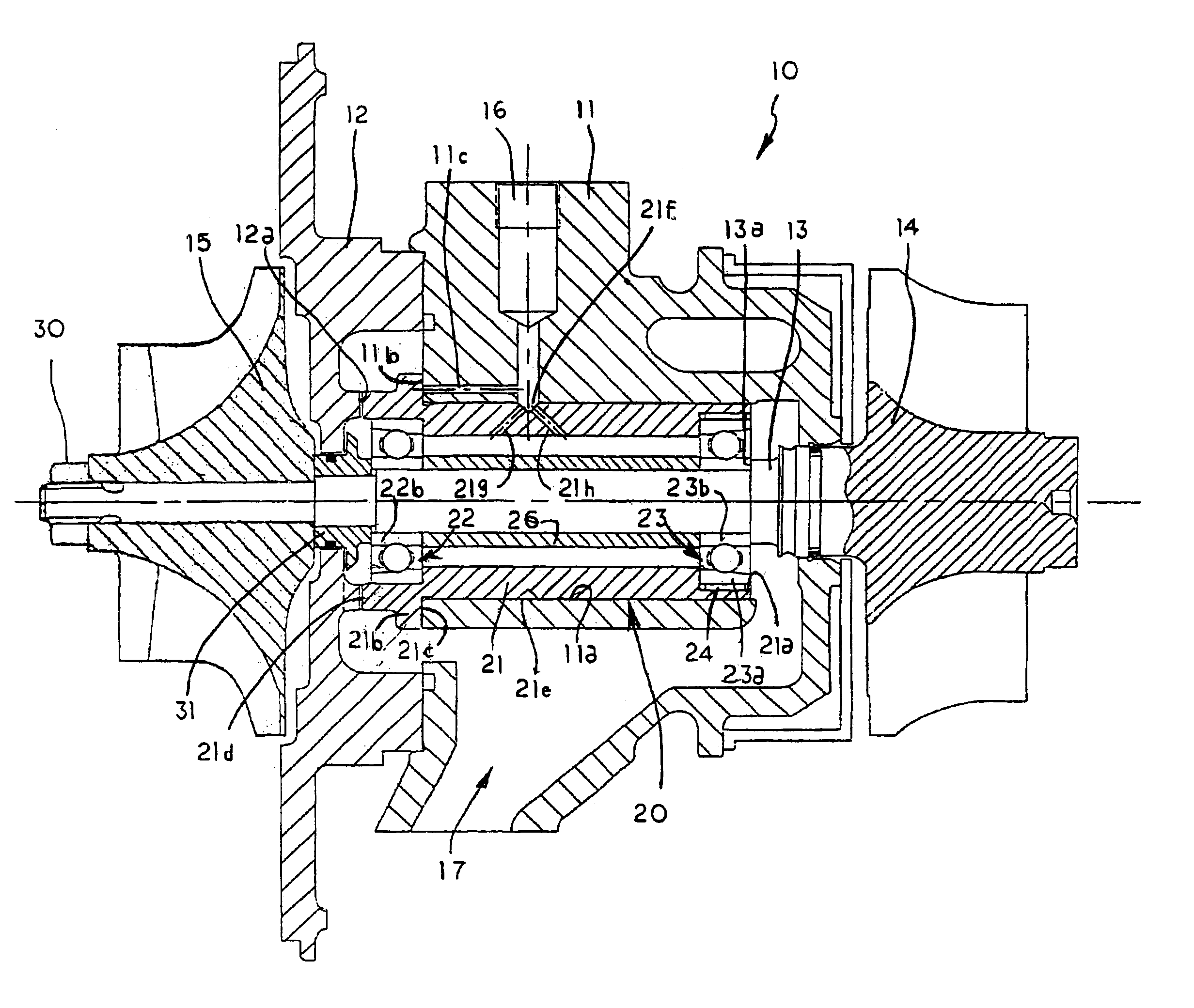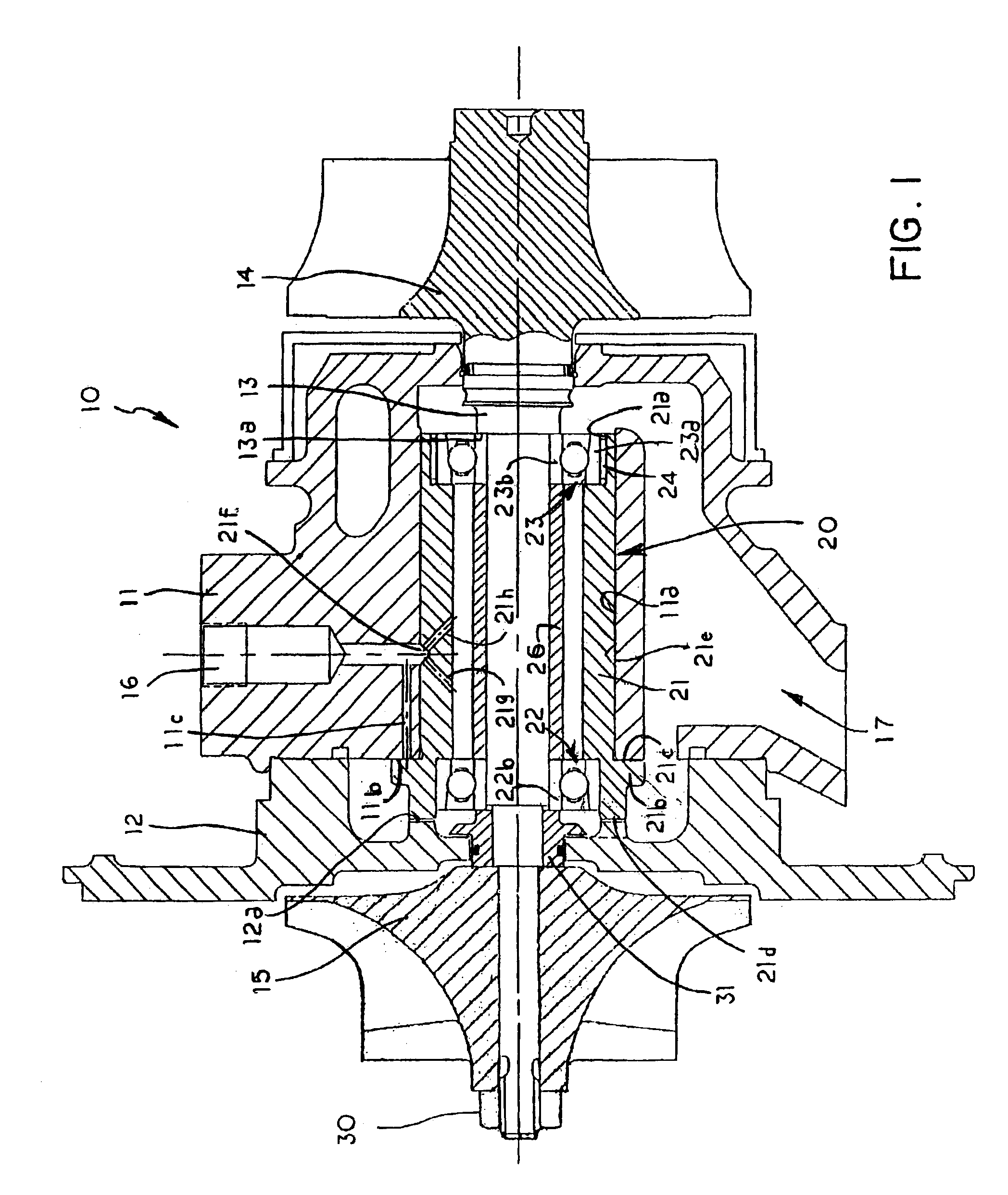Bearing system for high-speed rotating machinery
a bearing system and high-speed rotating technology, applied in the direction of elastic bearings, rigid support of bearing units, machines/engines, etc., can solve the problems of substantial total friction loss of the complete bearing system, inability to achieve sufficient durability, and early attempts to use ball bearings. failure, etc., to achieve high efficiency, high reliability, and high efficiency.
- Summary
- Abstract
- Description
- Claims
- Application Information
AI Technical Summary
Benefits of technology
Problems solved by technology
Method used
Image
Examples
Embodiment Construction
The bearing system of this invention is adapted to support, within stationary elements of a machine, a high-speed rotating shaft.
In a turbocharger 10, for example, stationary elements of the turbocharger, that is, the bearing housing 11 and end housing 12 encloses a rotating shaft 13 carrying a turbine wheel 14 at one end and a compressor wheel 15 at the other end. The bearing system 20 of the invention carries the rotating shaft 13 and is carried by the bearing housing 11. As well known in the art, the shafts of turbochargers have rotating speeds of 60,000 to 200,000 rpm and are exposed to the very high temperatures of engine exhaust gases at their turbine ends.
The bearing system 20 of this invention comprises an elongated rotatable cylinder 21 with one angular contact ball bearing 22 at its compressor end and another angular contact ball bear 23 at its turbine end. Angular contact ball bearings, as known in the art, are adapted to resist thrust in one axial direction, but not the ...
PUM
 Login to View More
Login to View More Abstract
Description
Claims
Application Information
 Login to View More
Login to View More - R&D
- Intellectual Property
- Life Sciences
- Materials
- Tech Scout
- Unparalleled Data Quality
- Higher Quality Content
- 60% Fewer Hallucinations
Browse by: Latest US Patents, China's latest patents, Technical Efficacy Thesaurus, Application Domain, Technology Topic, Popular Technical Reports.
© 2025 PatSnap. All rights reserved.Legal|Privacy policy|Modern Slavery Act Transparency Statement|Sitemap|About US| Contact US: help@patsnap.com


